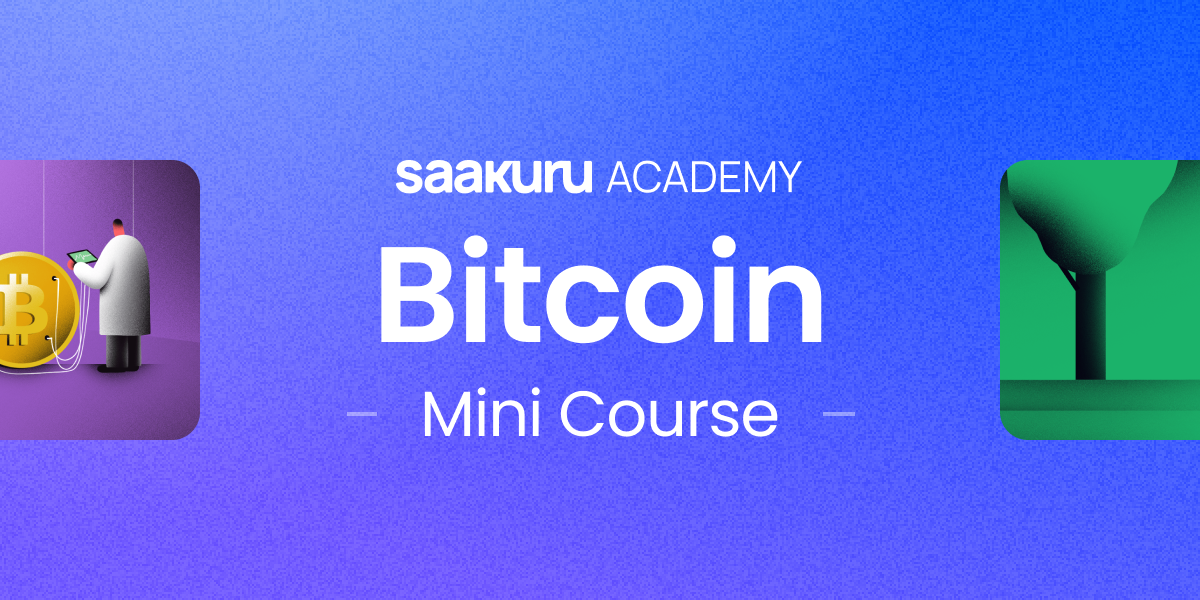
What is ‘The Merge’ of Ethereum?
Ethereum is currently the second-biggest cryptocurrency project on the planet in terms of market value, and this year, it underwent one of the biggest changes a cryptocurrency project has ever seen by swapping one consensus method — which had been in place since Ethereum launched in 2015 — for a completely different one.
This process, which took place in September 2022, has been referred to as “The Merge,” and you’ve likely heard about it if you’re a fan of Ethereum, or if you’ve recently become interested in using Ethereum. In this AAG Academy guide, we’ll explain what The Merge was, why it happened, and what it could mean for the cryptocurrency industry as a whole.
What was The Merge?
When Ethereum made its public debut seven years ago, it launched using the proof-of-work (PoW) consensus mechanism for verifying cryptocurrency transactions. That’s the same consensus mechanism used by Bitcoin and lots of other cryptocurrencies. PoW continues to be incredibly effective, but Ethereum decided several years ago that it needed a change.
In December 2020, Ethereum created the Beacon Chain, a separate blockchain from its original Mainnet blockchain, which uses the proof-of-stake (PoS) consensus mechanism instead. For almost two years, the Beacon Chain and Mainnet ran alongside each other in parallel, each fulfilling a different task.
The Beacon Chain was predominantly used for agreeing on active validators and their account balances, but after extensive testing, it became apparent that the Beacon Chain was a suitable replacement for Mainnet. So, in September 2022, Ethereum carried out The Merge, which brought the Beacon Chain and Mainnet together for the first time.
Since then, the Beacon Chain with its PoS consensus mechanism has handled all network data, including the process of validating transactions and account balances. The original Mainnet blockchain has now been deprecated, so Ethereum no longer uses PoW at all.
You might be interested in: What is Ethereum?
Why did Ethereum upgrade its system?
Although the PoW consensus mechanism continues to do its job effectively, it has one major downside that has become more and more controversial over the years. That is that PoW is extremely energy-intensive, relying on thousands of computers with powerful hardware to solve complex cryptographic puzzles. It is not at all environmentally friendly.
One of the biggest reasons why Ethereum upgraded its system from PoW to PoS is to reduce its environmental impact — something the cryptocurrency industry has been increasingly criticized for in recent years. The Merge has reduced energy consumption by approximately 99.95%, making the entire Ethereum network incredibly efficient.
What are the benefits of Ethereum proof-of-stake?
In addition to a huge reduction in energy consumption, moving to a PoS system also allows Ethereum to roll out further scalability upgrades that simply weren’t possible under PoW. Furthermore, it boosts security by adding greater disincentives against attacks. Bad actors lose out financially if they attempt to compromise the network because they have to stake their own tokens to play any part in the transaction validation process.
All of these improvements lay the groundwork for what Ethereum calls “the vision” — its dream of an even better network that fixes many of the problems that the majority of blockchains suffer from today. This includes being more scalable and more secure while maintaining the decentralized approach that Ethereum fans have come to expect.
What has happened to the value of Ethereum?
Although the value of Ethereum remained flat immediately after The Merge, it soon began to drop quite considerably. The price of Ether (ETH) fell from around $1,700 per token to around $1,300 per token in the space of a couple of weeks in September 2022. This left Ether at its lowest price in over two months. However, we can’t lay all the blame on The Merge.
Although, according to some experts, many investors were disappointed by The Merge because they wrongly believed it would make Ethereum faster and reduce gas fees, it’s likely that played a very small part in the fall of Ethereum’s value. There have been lots of external factors, which have caused a decline across the industry, that will have had a bigger impact.
Rising inflation, higher interest rates, and the threat of recession in many countries have upset not only the cryptocurrency industry, but also the stock market. On top of this, there is Russia’s ongoing invasion of Ukraine, which continues to have a negative impact on economies around the world.
As things stand, the price of Ether sits at around $1,262 per token, but almost every other cryptocurrency is also down when compared to its price earlier this year. (Bitcoin has dropped from over $30,000 in June to just $17,000 today.) So, whatever impact The Merge might have had on Ethereum’s price, it will have been negligible compared to all other factors.
References
- The merge
- Ethereum vision
- Why ethereum dropping after merge
- Ether flat after successful ethereum merge
Frequently Asked Questions
No, you can only mine cryptocurrencies that use the proof-of-work consensus mechanism. Ethereum now uses proof-of-stake, which relies on staking instead.
On the whole, The Merge has been very good for Ethereum. It has not only boosted security and scalability, but it has reduced Ethereum’s energy consumption by around 99.95%. That’s a huge win for those who care about the environment.
Furthermore, staking is considered to be much more accessible than mining given that the barrier to entry is significantly lower, so The Merge has opened up Ethereum’s blockchain to lots of potential network contributors who didn’t have the resources to take part before.
It certainly has the potential. Ethereum is the first major cryptocurrency project to swap the PoW system for PoS, in large part because of its environmental benefits. This puts pressure on other cryptocurrency projects to do the same, which is critical if we want the cryptocurrency industry to be more environmentally friendly overall.
Disclaimer
This article is intended to provide generalized information designed to educate a broad segment of the public; it does not give personalized investment, legal, or other business and professional advice. Before taking any action, you should always consult with your own financial, legal, tax, investment, or other professional for advice on matters that affect you and/or your business.
Get news first
Be the first to get our newsletter full of company, product updates as well as market news.

















